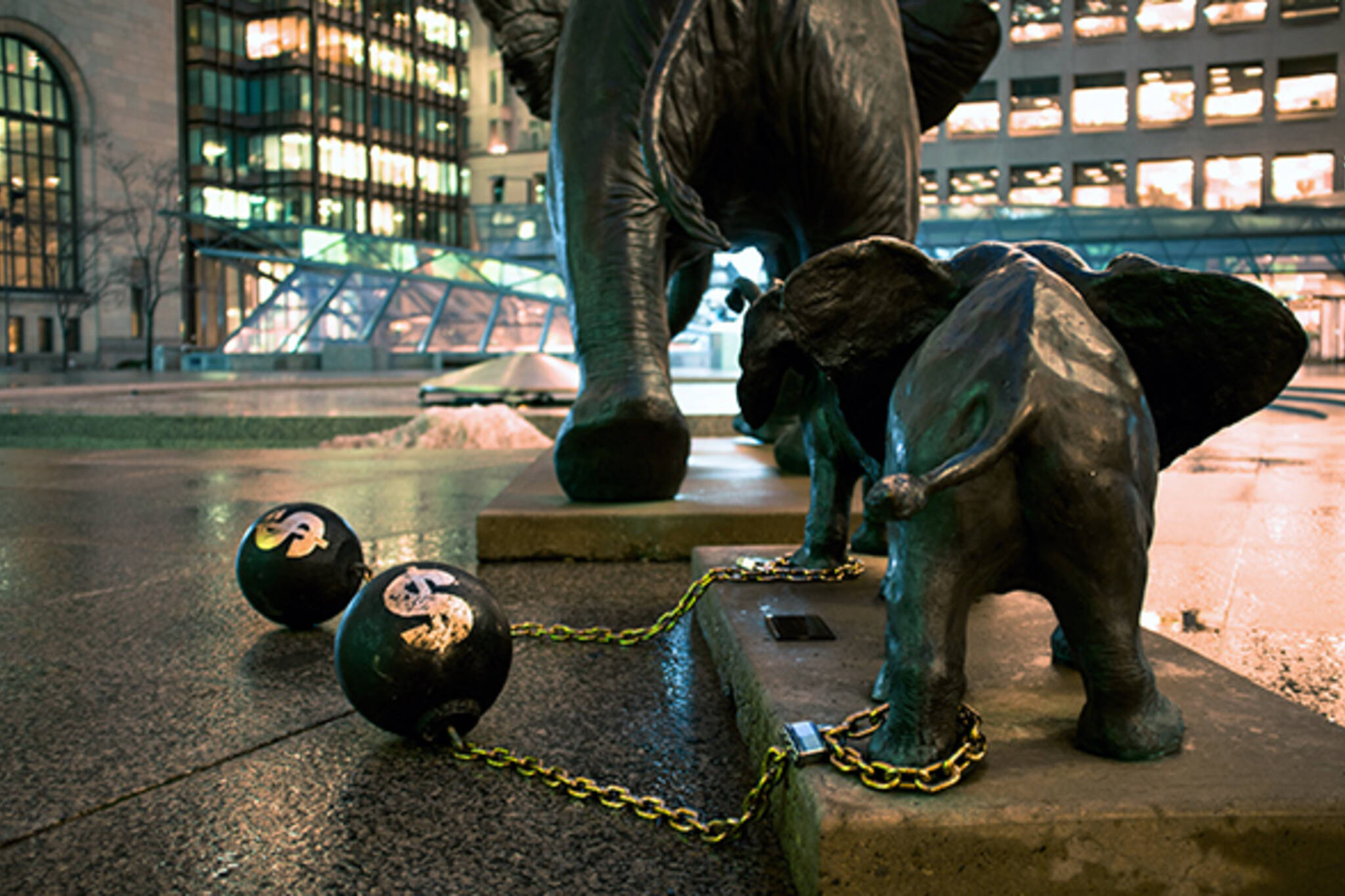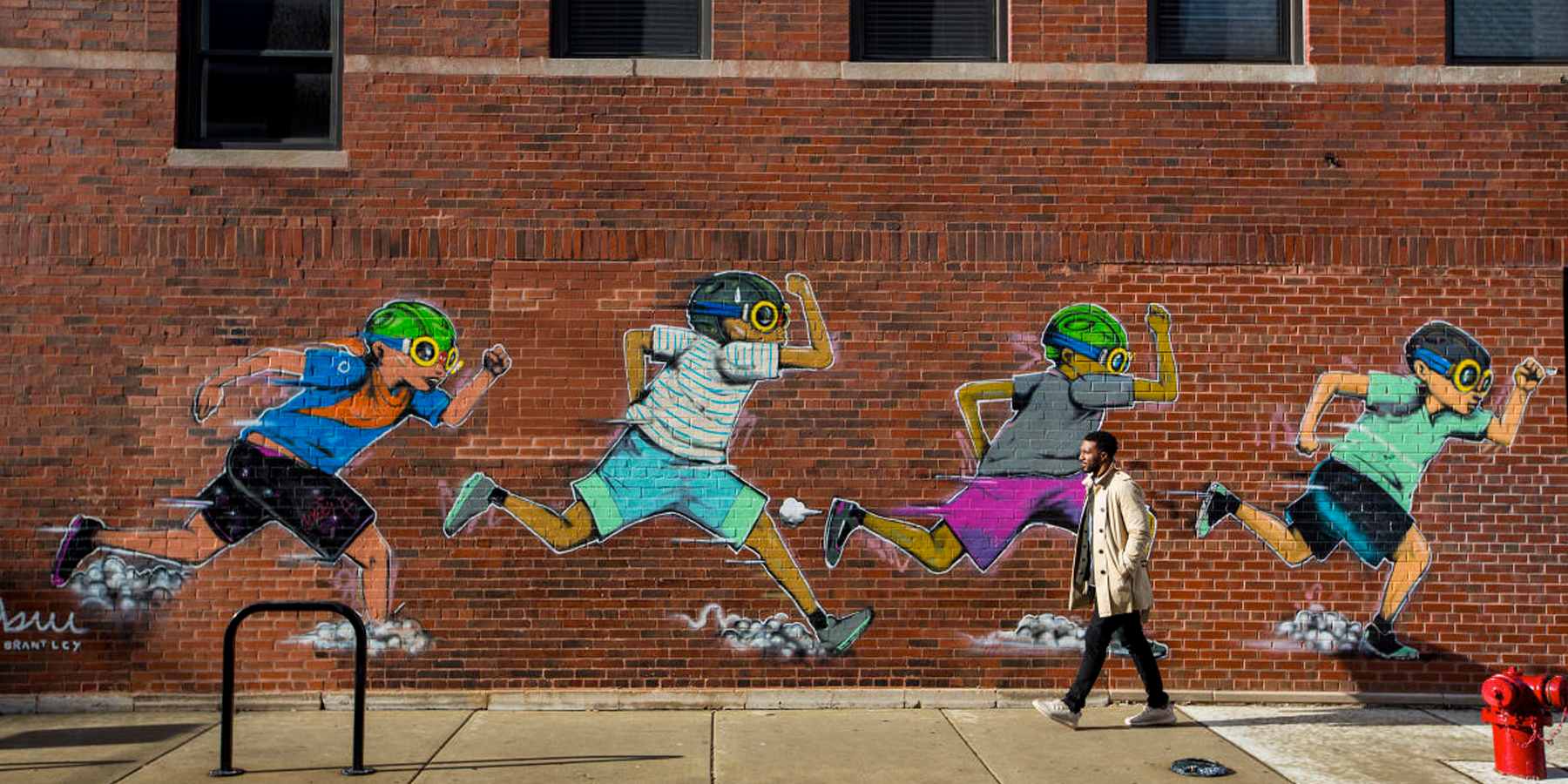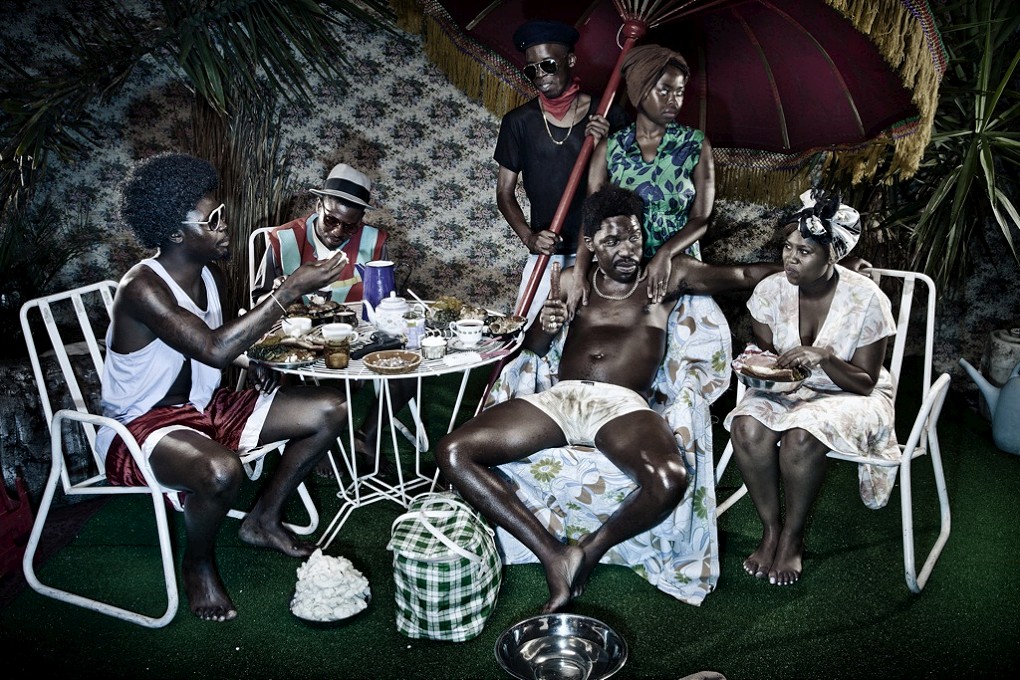Art

Visual Art Inspired by Hip Hop Culture
The common idiom "to take to the streets" has been used for years to reflect a diplomatic arena for people to protest, riot, or rebel. Early graffiti writers of the 1960s and 70s co-opted this philosophy as they began to tag their names across the urban landscapes of New York City, Los Angeles, and Philadelphia. As graffiti bloomed outward across the U.S., Street Art evolved to encompass any visual art created in public locations, specifically unsanctioned artwork.
The underlying impetus behind Street Art grew out of the belief that art should function in opposition to, and sometimes even outside of, the hegemonic system of laws, property, and ownership; be accessible, rather than hidden away inside galleries, museums, and private collections; and be democratic and empowering, in that all people (regardless of race, age, gender, economic status, etc.) should be able to create art and have it be seen by others. Although some street artists do create installations or sculpture, they are more widely known for the use of unconventional art mediums such as spray paint, stencils, wheat paste posters, and stickers. Street Art has also been called independent public art, post-graffiti, and guerilla art.

Guerilla Sculptures
Guerrilla art, also referred to as “street art”, is a method of art making where the artist leaves anonymous art pieces in public places. It is often an installation in an unauthorized location. It is a way for an artist to express their views and opinions to a large audience in an anonymous way. In contrast to popular belief, guerrilla art does not have to be done with spray paint. Other popular forms include videos and projections. There is no one motivation for making guerrilla art. However, popular reasons include statement making, the sharing of ideas, the desire to send out good karma, and plain fun. Many times guerrilla art is used to make a political statement, but sometimes, its intent is specifically to encourage pedestrians to to notice of their surrounding environment.
Guerrilla began as a small underground movement starting in the 1980s, partially as a response to the perceived takeover of public space by commercial interests, the perceived banality of many authorized public art pieces, and the frequent lack of authorized exhibition opportunities for artists.
Guerilla art can be
1. Sidewalk chalk
2. Sticker art
3. Flyers/posters
4. Journals (pass it on)
5. Zines
6. Object leave behinds (money, gifts, junk)
7. Notes (slogans)
8. Graffiti
9. Book inserts (library)
10. Book leave behinds (bookcrossing)
11. Letters (possibly love letters to strangers)
12. The age old ‘message in a bottle’, or a balloon. Or if you are really adventurous you might be drawn to carrier pigeons.
From: What is Guerilla Art?
Graffiti, defined simply as writing, drawing, or painting on walls or surfaces of a structure, dates back to prehistoric and ancient times, as evidenced by the Lascaux cave paintings in France and other historic findings across the world. Scholars believe that the images of hunting scenes found at these sites were either meant to commemorate past hunting victories, or were used as part of rituals intended to increase hunters' success.
Contemporary (or "hip-hop") graffiti dates to the late 1960s, generally said to have arisen from the Black and Latino neighborhoods of New York City alongside hip-hop music and street subcultures, and catalyzed by the invention of the aerosol spray can. Early graffiti artists were commonly called "writers" or "taggers" (individuals who write simple "tags," or their stylized signatures, with the goal of tagging as many locations as possible.) Indeed, the fundamental underlying principle of graffiti practice was the intention to "get up," to have one's work seen by as many people as possible, in as many places as possible.
It is important to note that contemporary graffiti has developed completely apart from traditional, institutionalized art forms. Graffiti emerged as a powerful artistic form within hip-hop culture, with young artists using public spaces as their canvas, creating vibrant works that told stories of resilience and resistance. The streets became their galleries, and the art reflected their struggles, aspirations and communal stories. The crossover between graffiti and hip-hop music was a natural progression, as both art forms shared the same spirit of rebellion and creativity.
Although the realms of hip hop and fine art began to intersect in the 80s, the relationship between the two still wasn’t as strong as it is now. This largely boiled down to the fact that rap’s culture was still embedded in the streets and often looked down upon by the upper echelons of the art industry. As such, it was hard for those in the hip hop community to truly rub shoulders with these individuals. But fast forward to the 90s, and things began to change.
Although hip hop was popular in the 80s, it truly took off in the following decade as mainstream artists like the Notorious B.I.G., 2Pac, Snoop Dogg, Eminem and Nas began ruling the airwaves. By the end of the 90s, hip hop was the biggest-selling genre commercially, finally eschewing its perception as an underground genre. This meant many rappers with newfound fame found common ground with those in the fine art industry and had the means to make a splash in this world too.
Swizz Beatz, otherwise known as Kaseem Dean, was one of the first Hip Hop artists to fully invest in and promote visual art. Previous to this, most artists would primarily mention and reference visual artists or their works in their music and album work. Today, investing in the artwork of Black creators by Hip Hop artists is seen as way to make capital and lift of Black voices. It is a way for them to make a profit while also giving back to the community.
Over the past 20 years, he and his wife have built one of the great American collections of contemporary art, and he has quietly become one of the art world’s most important power brokers, a singular advocate for artists in an industry that often exploits creativity for the sake of the bottom line. His goal has been nothing less than to “change the climate” of the art world, to shift the color of the artists on the walls of galleries and museums, which for most of history have been reserved for white men. “Because who else is going to do it?” he says. “Everybody goes into a gallery and sees what they can get for cheap and how to take advantage of an artist. I choose to do it the other way.”
Popular Visual Artists and Visual Works














Videos and Podcasts
The Art of...Hip Hop
This episode is a brief introduction to how the culture of hip hop has collided with art forms such as painting, installation art, photography and film. We follow its beginnings as an artistic and socio-political movement in the Bronx in the early 70s to its many manifestations throughout culture today.
Getting Up (Graffiti Documentary)
A documentary on the history and culture of graffiti, featuring many of the major players: JA, Ket, Noxer, Skuf, Chino and others.



